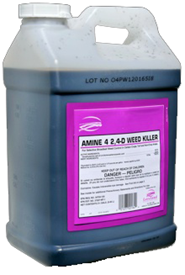Machine learning (ML) has become an increasingly important part of many businesses, from startups to large enterprises. However, deploying ML models can be a challenging task, especially for those new to the field. To simplify the process, we’ll show you how to build an effective ML deployment stack on Ubuntu 22.04, complete with all the necessary components.
Update Packages
Execute the below command to update the server packages to the latest version available.
sudo apt update
sudo apt upgrade -yInstall Python
Python is the most widely used programming language for ML, and it comes pre-installed on Ubuntu. However, you may want to install the latest version or additional libraries. Use the following command to install Python:
sudo apt-get install python3Install TensorFlow
TensorFlow is a popular open-source ML library developed by Google. You can install it on Ubuntu using the following command:
pip install tensorflowInstall Keras
Keras is a high-level neural networks API, written in Python and capable of running on top of TensorFlow. You can install Keras using the following command:
pip install kerasInstall Flask
Flask is a lightweight web framework that is commonly used to build web applications for ML. You can install Flask using the following command:
pip install flaskInstall Docker
Docker is a containerization platform that allows you to package your ML models and deploy them to different environments. You can install Docker on Ubuntu using the following command:
sudo apt-get install docker-ceClick here for details installation and setup of Docker.
Build a Docker image
Once you have Docker installed, you can use it to build a Docker image that contains your ML model and all its dependencies. You can create a Dockerfile in your project directory with the following contents:
FROM tensorflow/tensorflow
COPY . /app
WORKDIR /app
RUN pip install -r requirements.txt
CMD ["python", "app.py"]This Dockerfile assumes that your ML model is located in a file called app.py and that its dependencies are listed in a file called requirements.txt. To build the Docker image, use the following command:
docker build -t my-model .Deploy the Docker container
Finally, you can deploy your Docker container to a server or cloud provider of your choice. You can use the following command to run the container:
docker run -d -p 5000:5000 my-modelThis command starts the container in detached mode and maps port 5000 on the host to port 5000 inside the container. You can now access your ML model by visiting http://localhost:5000 in your web browser.
Wrap Up!
Building an effective ML deployment stack on Ubuntu 22.04 requires installing several components, including Python, TensorFlow, Keras, Flask, and Docker. By following the step-by-step instructions and commands provided in this guide, you can create a powerful ML deployment stack that will allow you to deploy your models with ease. With the right stack in place, you can accelerate your ML projects and gain a competitive advantage in your industry.






















































Leave a Reply
You must be logged in to post a comment.